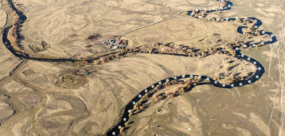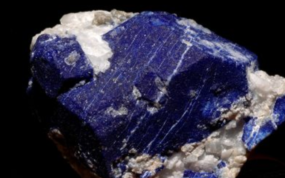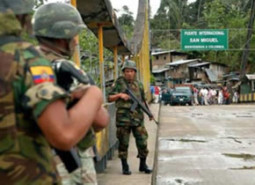Posted on 04 Jan 2017
In December Senior Research Analyst Marcena Hunter spoke at the Global Environmental Fund (GEF) event: Global Opportunities for Long-term Development (GOLD) in the Artisanal and Small-Scale Gold Mining (ASGM) Sector, which marked the launch of programming taking place under the Minamata Convention on Mercury.
The Global Initiative has increasingly engaged on the topic of gold. From human trafficking and organized crime in Latin America to tracing illicit financial flows in West Africa, the Global Initiative’s work has highlighted the significant role gold plays in delivering profits to criminal actors, enabling money laundering, and undermining development efforts. In particular, the informal nature of artisanal and small-scale gold mining (ASGM) makes it incredibly appealing to criminal actors. At the same time, ASGM is a significant informal livelihood option for millions of people around the world, playing an important role in poverty alleviation and economic development.
A particular challenge linked to ASGM is the use of mercury by ASGM miners to extract gold from ore. Emissions and releases of mercury can have devastating effects on the environment and human health. ASGM is responsible for the majority of current mercury emissions. The Minamata Convention on Mercury is a global treaty to protect human health and the environment from the adverse effects of mercury. The Convention specifically addresses ASGM, calling on country parties to reduce, and where feasible eliminate, the use of mercury in mining processes.
Efforts to reduce mercury use in the ASGM sector focus on formalization, as formalization is seen as the most effective way to promote alternative technologies which do not use mercury. However, criminal actors and IFFs are a significant threat to ASGM formalization. As such, for interventions to maximize their potential effectiveness it is essential to understand the relation and impact of criminal actors and IFFs on formalization.
Defining criminality
While there are certain types of actors and modus operandi that are present across a number of geographic regions, there is a broad assortment of criminal actors exploiting the sector, both in degree, culpability and reprehensibility. This can range from armed groups and organized crime groups to corrupt officials. On the other end of the spectrum, you also have small-time gold buyers illegally smuggling gold across borders. In fact, some argue this activity is better characterized as informal rather than criminal.
Illicit financial flows (IFFs) are very similar in this regard. Defined as ‘money illegally earned, transferred or used’, IFFs can be difficult to understand, much less map. However, IFFs are not well understood. To address this challenge the Global Initiative in partnership with Estelle Levin Ltd, has undertaken the GIFF Project to better understand IFFs linked to ASGM. Assessments of gold IFFs reveal a complex web of financial flows which comprise informal, illicit, and licit transactions.
As such, it is impossible to make a blanket characterization of criminality or IFFs when it comes to ASGM. Regardless of the nefariousness of actor involved, illicit activity and IFFs perpetuate the informality of the ASGM sector and are a significant obstacle to the success of formalization efforts. Interventions and responses will need to adapt and respond appropriately.
Why gold is appealing to criminal actors: cost-benefit analysis
Basic economic principles of cost-benefit analysis and risk-versus-reward can be applied to understand the motivations of criminal actors. Gold is very appealing in this respect, as It offers very high returns with very little risk. While the gold price has dropped since 2012, it is still a very profitable business endeavor for those involved. At the same, when compared to the risks of punishment for engaging in other illicit activity, such as drug trafficking or wildlife trafficking, the risks associated with illicit mining, smuggling and selling of gold are minimal. As such, the high rate of return, with minimal risk makes gold, specifically ASGM, a very attractive income stream to illicit actors.
The Global Initiative report on illegal gold mining in Latin America exemplifies this economic decision making. Soaring gold prices greatly increased the profitability of gold mining, whilst the “War on Drugs”, notably in Colombia and Mexico, sharply reduced the profitability of drug trafficking. As a result, there were considerable incentives for the criminal groups that control the drug trade to move into gold mining. The change of strategy proved so successful that in Peru and Colombia – the largest cocaine producers in the world – the value of illegal gold exports exceeded the value of cocaine exports. Despite a decrease in global gold prices, Latin American organized criminal groups continue to drive the expansion of illegal gold mining.
Organized crime and IFFs: spoilers to formalization
Criminal actors have little interest in supporting action which will cut off or reduce income streams. ‘Protection economies’ is a term used to describe how criminal actors will protect criminal markets and income streams, typically through either violence or corruption. Again, this also exists on a spectrum. When criminal groups protect gold businesses through violence, this has a direct impact on communities. When criminal actors protect profits through corruption, the effects on communities might not be as immediately felt, but it has very damaging long-term consequences, undermining state legitimacy.
A more pervasive, although more difficult to identify, spoiler to formalization is IFFs. IFFs can be cyclical in nature, with illicit profits reinvested into gold operations, further perpetuating IFFs and obscuring their pathways. Gold is often bought before it even leaves the ground, meaning that interventions that start at the mine or after can come too late. Complicating the issue further is the fact that activity and financial transactions often blur the lines between informal and illicit. Actors profiting from IFFs may have no interest in engaging in formalization efforts and may provide the financing that deters other actors from engaging.
Buyers play a very interesting role in this regard. Straddling the border between informal and illicit. Buyers may exploit vulnerable actors, including diggers and miners, who may have little choice but to operate in the informal economy. At the same time, buyers may hold a great deal of social capital and provide a vital social safety net for marginalized communities. As patrons, they provide social security in the form of financial or political assistance in times of trouble. ASGM stakeholders may be unwilling to participate in formalization initiatives if it requires them to abandon or jeopardize their relationships with buyers.
Without a nuanced understanding of IFFs and the tools to combat them, efforts to eliminate ASGM or push participants into the formal sector without adequate support may be ineffective or may negatively impact marginalized populations, rather than disempower criminal actors. Responses need to take into account social and cultural relationships and political economies, and at times may require engaging with low-level, illicit actors.
Looking forward: the Global Initiative and the Minamata Convention on Mercury
By mapping and assessing IFFS, it is possible to judge to what degree illicit actors are driving IFFs, the level of control they have over gold supply chains, and the impact on the wider range of actors active in the trade. This includes programming taking place under the Minamata Convention. The Global Initiative and ELL contributed to the design of the UNEP Gold project and are slated to aid in mapping political economies and financial flows (including illicit actors and IFFs) linked to ASGM. In turn, stakeholders will be better positioned to develop, advocate for and implement evidence-based interventions and responses that are more likely to deliver the formalization of the sector and reduce mercury usage.



